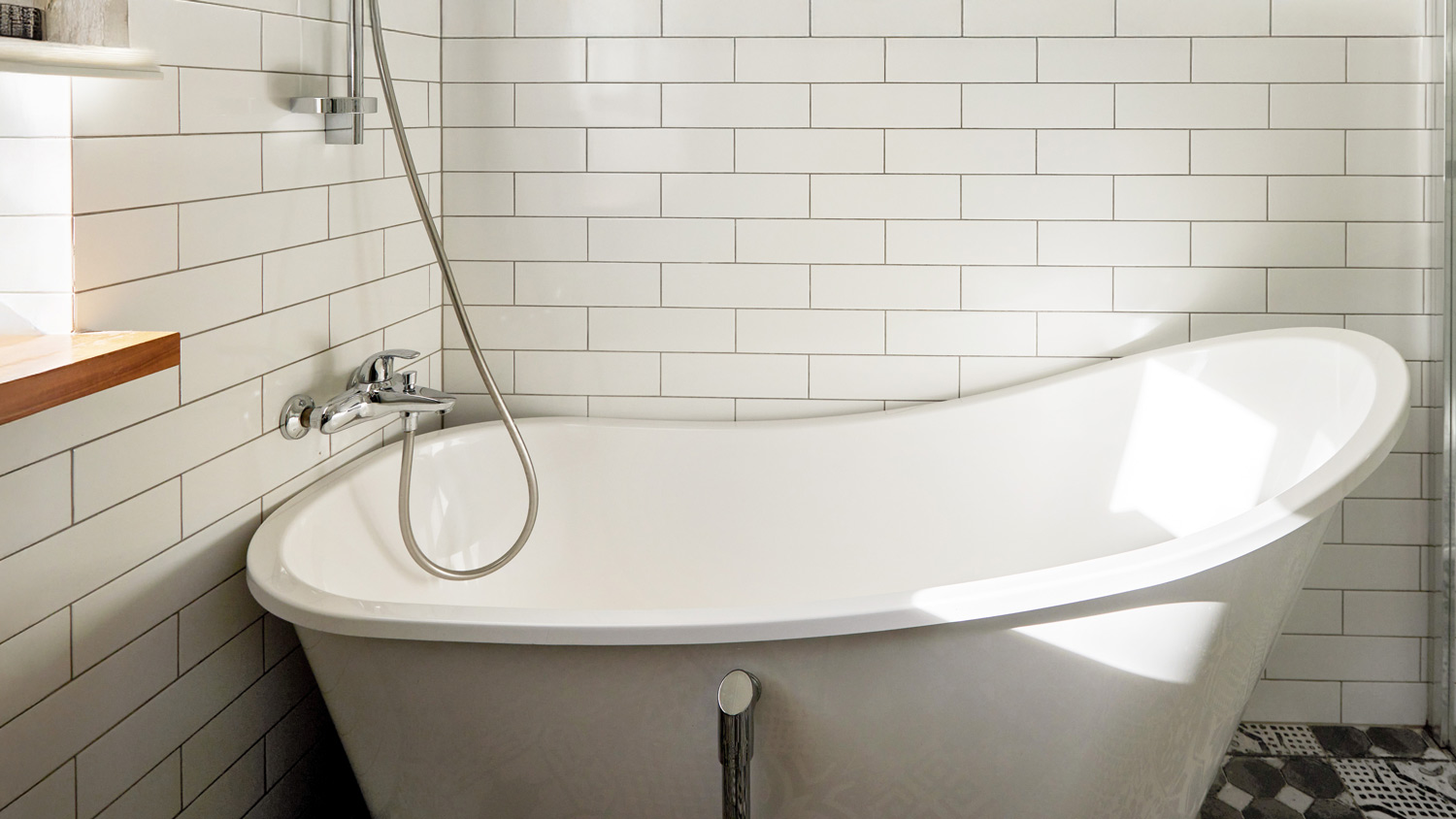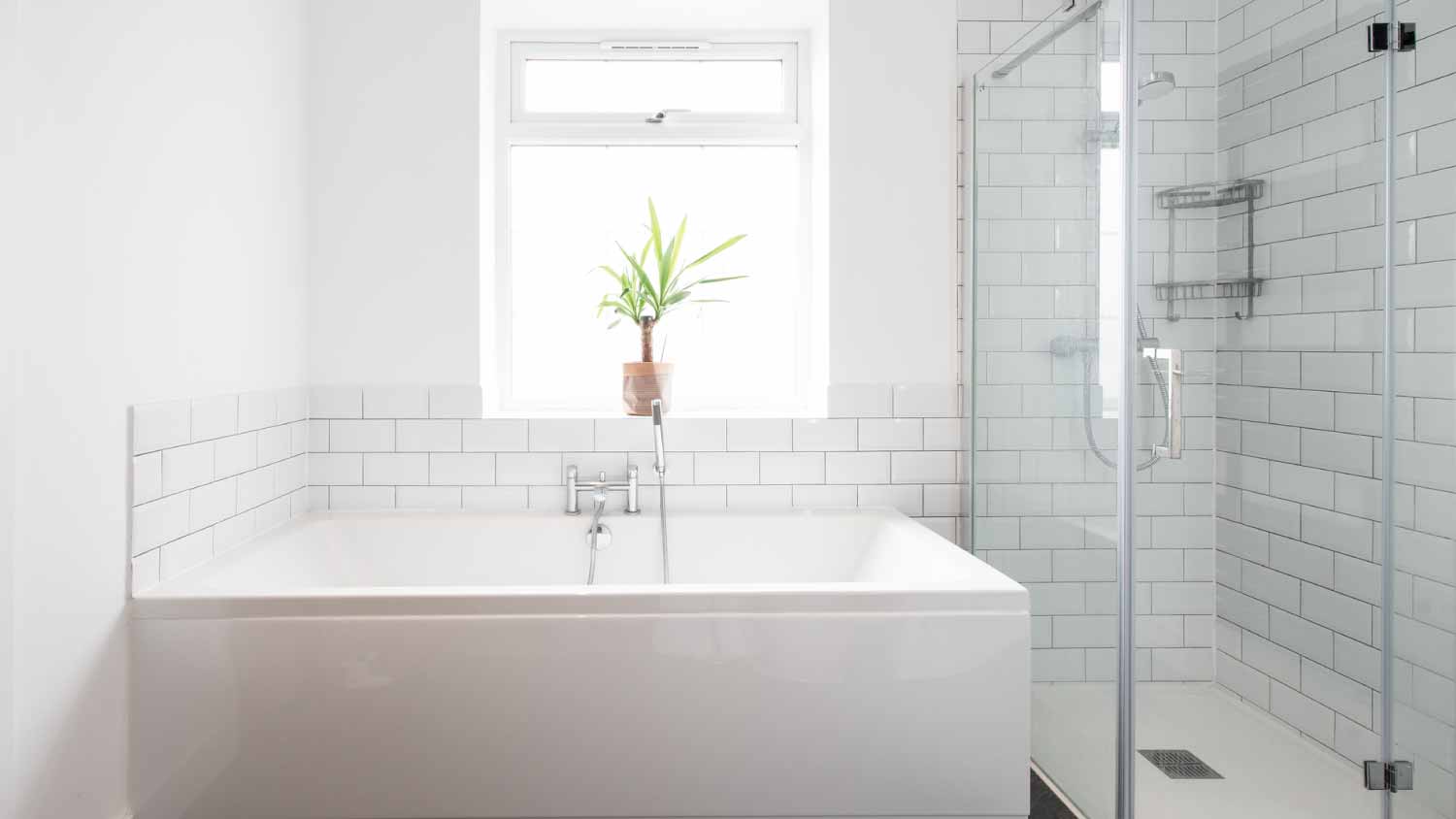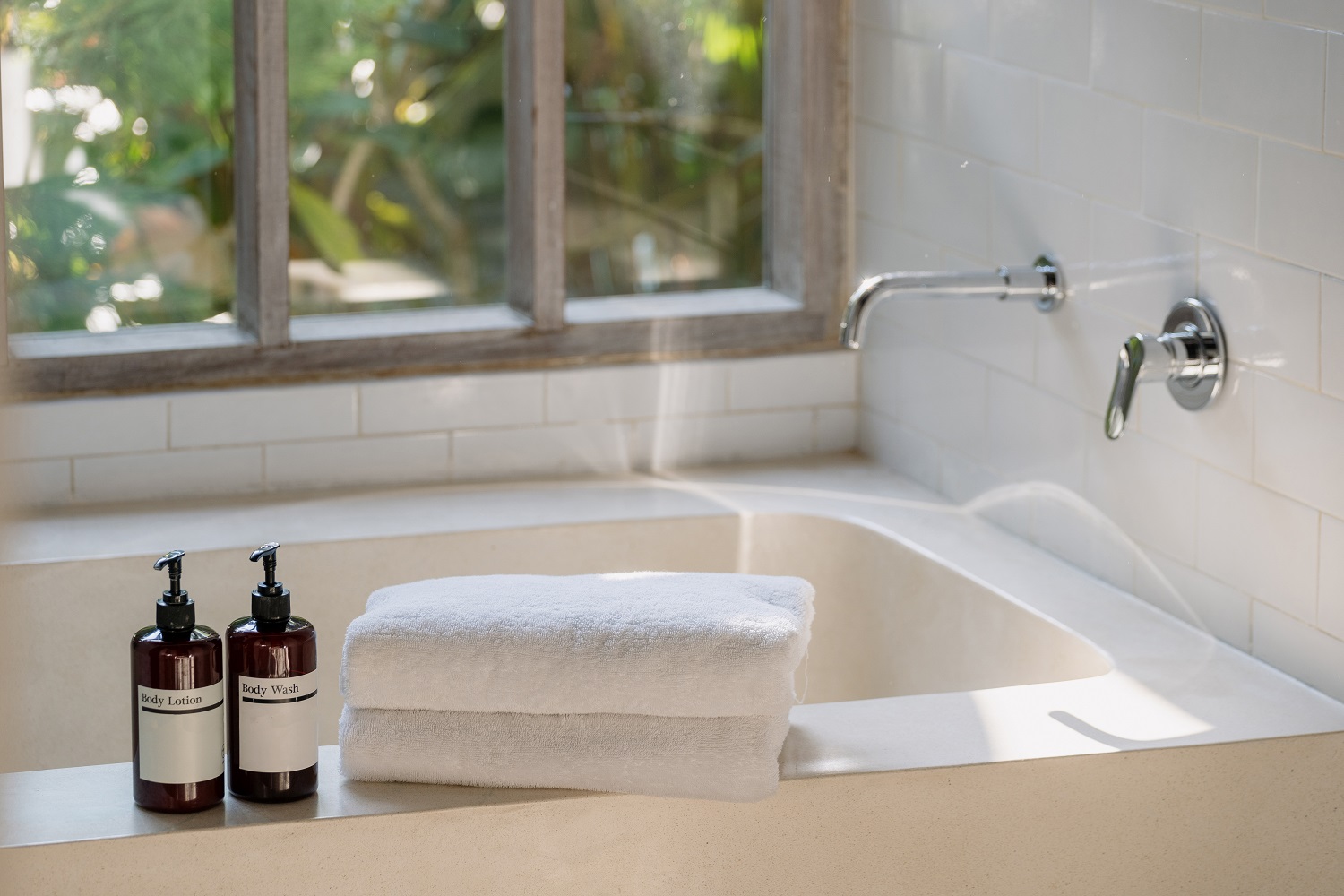
Building a guest house is one of the largest home projects and involves several different professionals. Learn about the cost to build a guest house and where you can save.
A tub can make or break your bathroom, so make sure you choose the right type


Fiberglass bathtubs last about 15 years, while acrylic tubs can last up to 30 years.
Both acrylic and fiberglass bathtubs are relatively inexpensive to install.
Acrylic is more durable than fiberglass, which is more likely to crack, fade, or scratch.
On average, acrylic tubs cost about $1,000 to install, while most fiberglass tubs cost up to $800.
When it comes time to install a new bathtub, there are several design choices to make. If you’re comparing acrylic versus fiberglass bathtubs, the choice won’t be easy. Acrylic and fiberglass tubs look reasonably similar at first glance, but there are plenty of visual and physical differences between them. While fiberglass is more affordable and lighter, acrylic is more durable and lasts longer. Take a look at this matchup to see which bathtub comes out on top.
While acrylic and fiberglass are both popular and inexpensive bathtub materials, there are some differences you may want to consider when shopping for one.
| Acrylic | Fiberglass |
|---|---|
| Weighs about 100 pounds | Weighs about 70 pounds |
| Easy to clean with a variety of cleaners | Will scratch with the use of abrasive cleaners |
| Thicker material that doesn’t scratch with frequent use | Thinner material that wears down with frequent use |
An acrylic tub is not “100% acrylic”—it’s made of clear plastic reinforced with fiberglass. While both can be found at any hardware store, acrylic bathtubs are slightly more common and come in various shapes, sizes, and colors. Here are some pros and cons to consider:
Good heat retention
Nonporous and easy to clean
Repels well against moisture and mildew
Lightweight
Prone to scratches, especially with non-compatible cleaners
Prone to flexing
Fewer high-end options
Fiberglass is an equally popular bathtub material that can be found in most hardware and bathroom supply stores. It shares many of the same pros and cons as acrylic, with the biggest difference being fiberglass tubs are more affordable.
Affordable
Lightweight
Thin material that can easily chip or fade
Less durable

Acrylic and fiberglass are both solid, inexpensive options that give your bathroom a facelift, though they differ in cost, lifespan, weight, and durability.
| Bathtub Feature | Acrylic | Fiberglass |
|---|---|---|
| Weight | Heavier (about 100 pounds) | Lighter (about 70 pounds) |
| Durability | More durable, less brittle | Less durable, more brittle |
| Lifespan | Up to 30 years | 10–15 years |
| Average installation cost | $1,000 | $800 |
| Appearance | More color options, smoother and glossier finish | Limited options, gelcoat finish that eventually fades and cracks |
| Heat retention | Moderate heat retention | Poor heat retention |
| Cleaning and care | Compatible with most cleaners, less prone to staining | Scratches easily (especially with abrasive cleaners), more prone to staining |
| Scratch resistance | More resistant | Less resistant |
| Moisture resistance | Nonporous, repels moisture and mildew | Eventually becomes porous as the top coat wears away |
| Installation | It’s possible to DIY but the best option is to hire a professional | It’s possible to DIY but the best option is to hire a professional |
| Repairs | Surface scratches can be sanded and recoated, but cracks are difficult to repair | Scratches are difficult to repair and they require color matching, but cracks are repairable |
The cost to replace a bathtub is obviously a key consideration, but both acrylic and fiberglass tubs are reasonably affordable compared to many other materials.
Acrylic tubs average $1,000 to install, while fiberglass tubs cost up to $800, including installation.
An attractive bathtub pulls your entire bathroom together to create a relaxing and inviting space.
Available in more colors than fiberglass
Has a smoother, glossier finish
Has an acrylic or gelcoat finish to emulate the smoothness and gloss of acrylic tubs
Gelcoat doesn't last as long as proper acrylic tubs
Gelcoat eventually fades and cracks, and it isn't quite as smooth to begin with
Both acrylic and fiberglass tubs are comparatively easy to install if you have the right experience and tools. However, because getting the plumbing wrong can be a costly disaster, it’s best to hire a local bathtub installer instead.
A standard acrylic bathtub tips the scales at around 100 pounds, while a comparable fiberglass model weighs only 70 pounds. So if you're installing a tub upstairs, a fiberglass one is easier to carry. However, because acrylic is more robust, it can withstand more weight and pressure during the installation process.
Your new bathtub shouldn't be difficult or complicated to clean—nobody enjoys extra housework.
Can use a wider range of cleaning supplies
Can use rougher cloths and gritty cleaning substances
Not prone to staining
Has a smoother surface less likely to encourage limescale buildup
Gelcoat is fairly soft, so it scratches easily
Cannot use abrasive scrubbers or cleaning substances
Prone to staining
Rougher surface catches limescale
Installing a bathtub costs money, so you want a solid return on your investment in terms of longevity and durability.
Lasts up to 30 years
Less prone to cracking
Less prone to scratches
Thicker and less brittle than fiberglass
Lasts up to 15 years
Brittle and prone to cracking
Scratches easily
Thin
Eventually becomes porous as the topcoat wears away
Whatever tub you have can encounter surface scratches and cracks. Ideally, a repair should be affordable and straightforward.
Acrylic is solid, so if it eventually shows signs of wear and scratches, you can simply sand out the layer of damage and apply a glossy topcoat. However, more significant damage, such as a crack, usually goes right through the tub’s wall because it's a solid sheet of acrylic.
Cracks in acrylic tubs are challenging to repair and may require you to have a whole new tub installed.
Scratches in fiberglass tubs are more challenging to repair, requiring extra steps, including color-matching. Remember, it's the gelcoat that holds the color, so when refinishing a scratch or crack, you'll need to find the right color for the new topcoat. If you opt for a clear coat, the fiberglass beneath will show through.
A single crack in a fiberglass tub is repairable, unlike an acrylic tub, as it probably won't penetrate all the layers of fiberglass. However, it still needs a speedy repair because exposed fiberglass is porous.
A new bathtub costs anywhere from $2,000 to $9,400, depending on materials, labor, and additional factors. But you can expect closer to the $1,000 range for acrylic and fiberglass unless you’re doing other renovations. Installation costs will also factor into the type of tub you choose because some are easier to install than others. High-end and uniquely sized models are more expensive than standard-size tubs.
Installing a bathtub may seem easy for a DIYer, but there are many factors to consider before attempting it. Bathtub installation is physically challenging due to the size and weight of the tub. While fiberglass may be light compared to a cast-iron tub, you’ll still need two people to lift it. Reconnecting plumbing and electrical is also dangerous, and if done improperly, they’re expensive to repair.
Installing a bathtub is not for the novice. Entrusting its installation to the pros will allow you to avoid injury, keep your bathroom and home damage-free, and save you money in the long run.
Simple plumbing DIYs like unclogging a drain are perfect for homeowners, but taking on a major plumbing project has risks. An incorrect installation could lead to leaks and extensive damage to your home. With your safety and wallet in mind, consider hiring a licensed plumber to take on complex jobs.
From average costs to expert advice, get all the answers you need to get your job done.

Building a guest house is one of the largest home projects and involves several different professionals. Learn about the cost to build a guest house and where you can save.

A bidet—stand-alone, attachment, spray nozzle, or toilet combo—reduces toilet paper usage and saves money, but how much is a bidet? Here’s how much you’ll pay.

Whether you’re looking to hire a pro or DIY, the cost of a kitchen design can add up quickly. Learn the cost factors involved in designing your kitchen.

An updated bathtub can give a bathroom a whole new look. Find out how much it costs to replace a bathtub in Austin, TX, including prices by type and labor costs.

A handyperson is an ideal pro to remove and install your new bathroom vanity and sink. We have rounded up the best people who can get the job done.

An updated bathtub can give a bathroom a whole new look. Find out how much it costs to replace a bathtub in Portland, OR, including prices by type and labor costs.